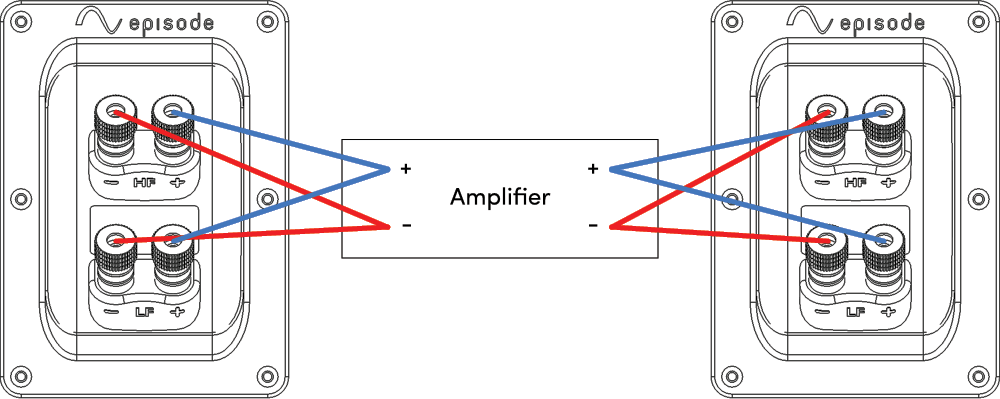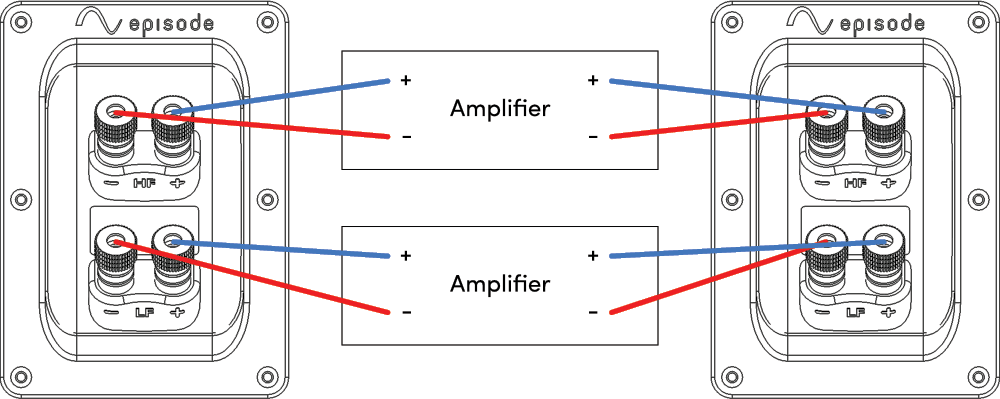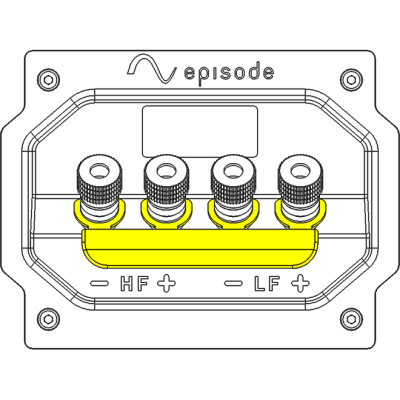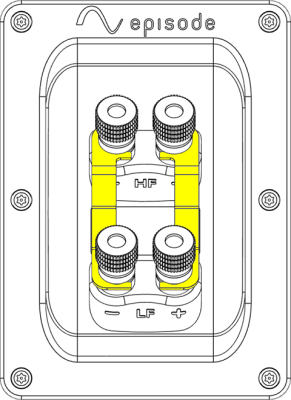Wiring Your Speakers
Strip the insulation on each conductor approximately ¼” and insert into the speaker terminals. Ensure that there are no stray strands of wire protruding from the connectors. Observe proper polarity (+ to + and – to – at the speaker and amplifier).
Shorting Bar
HTR speakers come supplied with a shorting bar installed. This shorting bar creates a direct connection between the HF (high frequency) and LF (low frequency) wire terminals, allowing the speaker to run from a single amplifier.
While the speakers provide excellent performance as is, audio quality can be improved by bi-wiring or (preferably) bi-amping.
What Is Bi-Wiring and Bi-Amping?
Bi-wiring reduces interaction between the woofer and the midrange and/or tweeter. Use separate 2-conductor speaker cables or a single 4-conductor speaker cable and connect them to the low frequency (LF) terminal and the high frequency (HF) terminal. Connect both cables to the same terminal on the receiver/amplifier.

Bi-amping provides the highest possible performance by using separate amplifiers for LF and HF. Using identical amplifiers is preferable; if using different amplifiers, ensure that:
-
All amplifiers are phase coherent, either phase or non-phase inverting, and have identical voltage gain.
-
All amplifiers used for LF are identical, and all amplifiers used for HF are identical.

Preparing the Speakers

